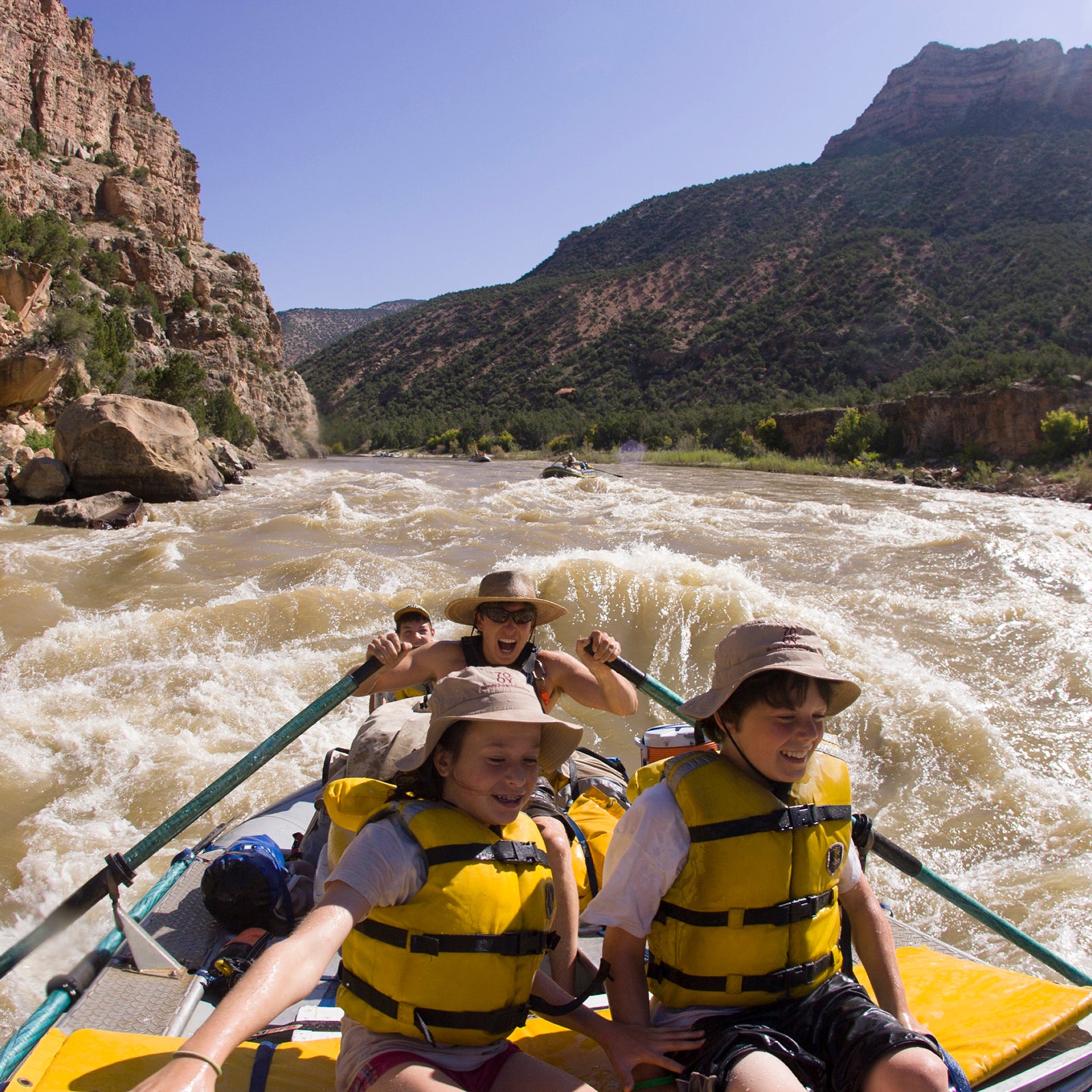My daughter, Josephine, is only 19 months old, and my husband and I are already debating when she should be allowed on her first Grand Canyon river trip.
Jesse thinks it’ll be safe to take Jo down the Colorado River and through the canyon when she’s seven years old. Then again, he runs Class V rapids in his own kayak without batting an eye. I’m of the opinion that, because Grand Canyon rapids can overpower weak swimmers, Jo should be at least ten; but then, I can work myself into a panic at the top of a Class III rapid. Like many people raising a child together, Jesse and I have different tolerances for risk in our own lives, which means we also have different opinions on how much risk is acceptable to introduce into our child’s��life.
Here’s what we do agree on: Some risk is healthy, and the benefits of spending time in wild places outweighs the potential dangers. Trying to protect kids from every bump, scrape, and bruise prevents them from figuring out risk management on their own. Still, because risk perception is fairly subjective, it can be hard for parents to judge which outdoor risks are healthy and which are truly dangerous. How much do our fears keep our kids safe, and how much do they hold them back?
My first step in parsing out these questions was to get in touch with Eva Holland, an �����ԹϺ��� correspondent��who studied how people identify and respond to danger for her forthcoming book��. Holland told me that the difference in how people like me and people like Jesse perceive risk comes not just from our individual skills and experience��but from how our brains are wired.
“The brain area that appears to be most critical to our threat assessment is the amygdala,” Holland said.��That’s the same area of the brain��that scientists studied in��Free Solo to understand climber Alex Honnold’s fearlessness. Research suggests that differences in how our amygdalae react to stimuli may lead some people to overestimate risks, seeing threats where there are none, and some to see no threat when perhaps they should see one. That may explain why some parents are cool letting their toddler scramble up a boulder��while others (hello, me) hover nervously nearby.
Trying to protect kids from every bump, scrape, and bruise prevents them from figuring out risk management on their own.
Next, to figure out how two such people can find middle ground, I called Shawn Kangro, a guide who’s spent more than a thousand nights taking teenagers on wilderness expeditions in Alaska and British Columbia. Judging how much risk to expose other peoples’ kids to has been part of his job for over a decade, but as a father of two children, ages four��and six, he’s also now navigating these questions in his own life.
Kangro’s family was one of the first in Canada to have on a birth certificate, so his children have two moms, who are the primary caregivers. “It’s not that we have different ideals��or even want to do different things,” Kangro said. “They’re fully supportive of us doing adventurous trips. It’s just, the age that I think [the kids] are��ready is different from the age that the moms think they’re ready.”
Kangro, for instance, has dreamed of taking his kids down British Columbia’s Lower Stikine River since they were born. It’s a big, swift-moving river,��with high consequences if a boat flips, but it’s not technically difficult. In 15 personal and professional trips there, Kangro has never flipped a canoe, so he felt��confident that he could keep his kids safe. Their moms, on the other hand, were concerned that 11 days on the river might push the kids too far outside their comfort zone.
After years of discussion, the family compromised and did the trip together over the��summer. “It was awesome,” Kangro said. “Once we were out there, parenting was easier than at home.”
One reason things went smoothly is because��he and his co-parents spent all that time��discussing the trip, which meant anxieties came up in advance, and they were able to resolve them rationally��rather than in the heat of the moment. Another was that their family had already done shorter trips and spent lots of time outside, so the kids understood that even if they were wet or cold or a little afraid at times, they would be OK. Plus, all that outdoor time meant they were comfortable in slippery, uneven terrain, which is where kids are more likely to get hurt��compared with��paddling or doing other outdoor sports.
As for how we, as parents, can learn to gauge risk more objectively, it’s complicated.
In other words, judging how risky an activity is involves looking at more than��just some��objective measure of the��inherent risk in an activity, though that��. Instead, it depends on the kids’ individual skills and personality. “If a kid has been raised walking on uneven ground, rather than just on paved roads, they’re inherently going to do better in an environment where all the ground is uneven,” Kangro told me. “Kids normalize whatever situations you put them in, which is one reason I want to introduce these kinds of trips when they’re young.”
Knowing how your child naturally responds to potentially scary situations is also part of the equation. “To some extent at least, we do seem to have distinct, patterned approaches to risk—even setting aside our level of knowledge of the situation,” Holland explained. So the age at which one kid might be ready for a river trip could be different from another, even among siblings.
As for how we, as parents, can learn to gauge risk more objectively, it’s complicated.
As I talked with other parents who have dealt with these questions, I came to suspect that judging when to take our kids on big adventures is as much an art as a science,��a matter of meshing our own idiosyncratic risk tolerance with our child’s unique personality and talents. Like many things in parenting, there’s no right answer,��no magic age at which a child will be ready for a particular activity or trip.
On one hand, an easy answer would be nice for a change. On the other, maybe that means Jesse and I can stop debating when Jo will be ready for the Grand Canyon and spend our time developing the skills she’ll need whenever she is ready. Taking her on short, easy river trips sounds better than arguing, anyway.


